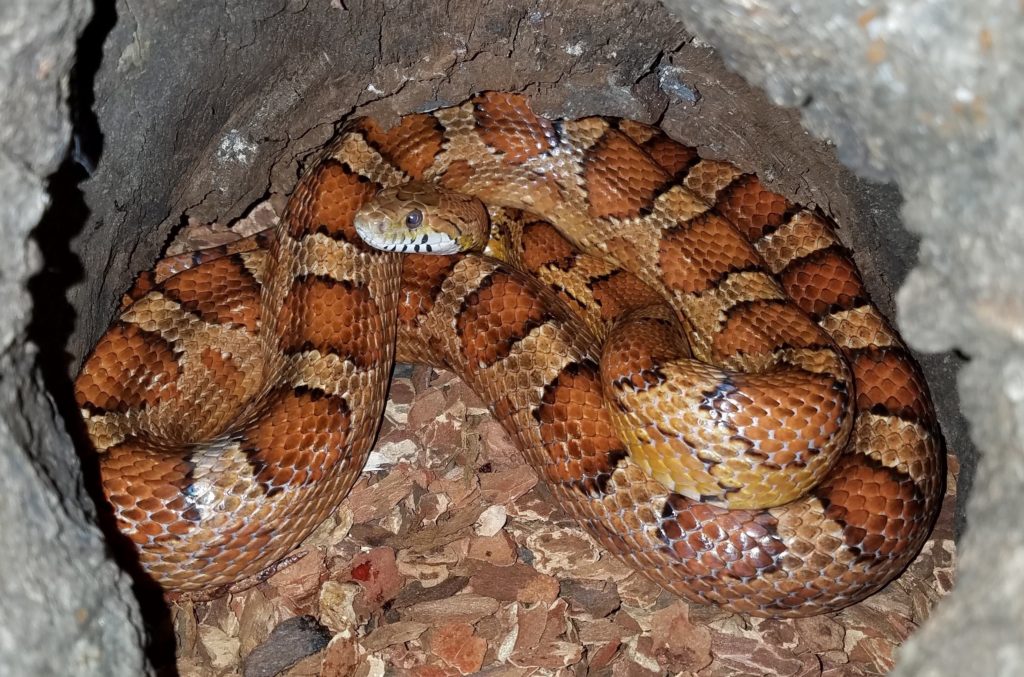Wildlife. We all play a role in its preservation and protection. And sometimes that means protecting things we may not be really crazy about. Can you think of an animal or insect you’d rather not come across on one of our trails? For me, there are a few. But, there’s one answer we hear a lot: SNAKES!
Snakes, birds, bugs, and plants are just some of the wildlife you’ll come across in one of our nature preserves. Sometimes, that even means you’ll see them on the trails. And it’s all by design! Unlike parks, which focus primarily on recreation, nature preserves help promote natural areas within city limits. This is great for us humans. It means we don’t have to travel outside of our city and towns to have access to nature. But, it also helps to protect our wildlife and the natural biodiversity in the area. And that’s important for a rich, functional ecosystem.
So how do we respect snakes AND stay safe on the trails?
Snakes Are Our Friends

We’ve said it before and we’ll say it again: snakes are NOT out to get you. In fact, quite the opposite: they’re more scared of us than we are of them! Most snakes (including copperheads, the venomous species seen locally) stay as still as possible when faced with potential predators (like humans). In fact, one of our environmental educators experienced that firsthand while at the back of a group she was leading through a trail. They all stepped over a hole that a massive copperhead snake was hiding in before she knew it was there!
So no, they aren’t going to swing down from a tree or launch at you from the bushes. That’s a characteristic we see more often in movies than real life. And sure, you may not find snakes as cute as rabbits and songbirds, but they deserve the same respect and care that we give those species.
The Truth About Snake Deterrents
Lately, our Park and Recreation staff has been finding mothballs along the trails at our nature preserves. There are a few things to know about this supposed snake deterrent:
- Mothballs do not deter snakes. This is actually just a very popular myth.
- Using mothballs in any way other than what is specified by the label (pesticides intended to kill clothes moths and other fabric pests) is not only illegal, but can also harm people, pets, and the environment.
- Mothballs usually contain either naphthalene or paradichlorobenzene. Both of these chemicals are highly toxic and can get into the soil and groundwater.
Lime, salt and snake deterrent sprays are other rumored options for keeping snakes away but the truth is that there is no proven solution. By attempting to protect yourself, you could in fact be causing more damage than you realize.
Learning to Live and Let Live
You may not want to hear it, but having a few snakes around is a good sign you have a healthy environment. At home, the best thing you can do to *try* to keep snakes away is eliminate their food source, typically mice. You can also get rid of brush piles, wood piles, or cluttered outdoor storage spaces.

But, at our nature preserves, snakes belong. They are the very wildlife that we are trying to protect because they’re an important part of our ecosystem. That means out on the trail, the best (and only thing) you can do to keep snakes out of your way is make your presence known! Take loud steps and will let them know you’re coming, which means they’re less likely to get caught off guard. But being aware of your surroundings should be more than enough effort. No snake deterrent neccessary.
And if you want to learn more about our slithery friends, come visit us in person. Our environmental educators would love to chat with you!
